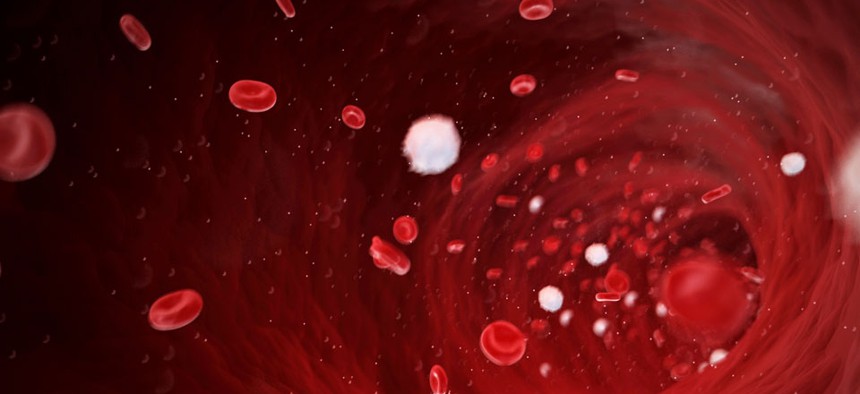Video: Nanorobots That Hide in Your Blood Like Viruses Could Someday Fight Cancer

Shutterstock.com/Sebastian Kaulitzki
The new technology builds structural hangers out of genetic code to attach a fatty covering to the nanodevice.
When it comes to fighting disease, your body’s defense system doesn’t like enlisting outside help. Overcoming this “locals only” attitude has been a huge handicap for scientists trying to make medical nanorobots, but now a team from Harvard thinks they’ve developed a disguise that will help the nanorobots sneak through and get to work fighting cancer.
The new technology builds structural hangers out of genetic code to attach a fatty covering to the nanodevice. This covering is similar to what some viruses use to move through our bodies undetected.
Medical nanorobots have been swimming in the scientific imagination since 1959, when Richard Feynman’s friend Albert Hibbs first proposed them. Researchers at Harvard’s Wyss Institute for Biologically Inspired Engineering gave the field a turboboost in 2009 when William Shih, this papers’ senior author, figured out how to fold DNA into programmable machines. He called his discovery DNA origami.
Shih and his team have been working on a disguise since at least 2012, when they figured out how to make their nanorobots bind to leukemia and lymphoma cells and send chemical instructions that made the cells self-destruct.
To create their prototype, the team first folded pieces of DNA into an octahedral shape the size of a virus. Then, they used shorter pieces to build handles along the outside to which they hung chunks of fatty lipids, which created a thin, obfuscating membrane.
They loaded the nanorobots with flourescant dye for tracking and injected them into mice. Nanorobots that fall prey to the immune system’s xenophobia end up in the gut. But, when they scanned the mice injected with cloaked nanorobots, their entire body glowed–evidence that the body was not dispatching them to its waste treatment system.
The initial test used inert, rather than cancer-fighting nanobots, which have only been tested in the lab. So this trial only confirms that cancer-fighting nano-ninjas are possible, not that they’re here. Creating a full-fledged, augmented immune system will require more lab work, followed by years of clinical trials. However, this research puts blood-borne systems capable of diagnosing and treating some of humanity’s worst diseases a step closer to reality.
Check out this video for a cool visualization of how the team put these little helpers together.
Reprinted with permission from Quartz. The original story can be found here.
(Image via Sebastian Kaulitzki/Shutterstock.com)
NEXT STORY: GSA's Bev Godwin to Retire






